Summit region with degassing Rerombola lava dome
Summit region with Rerombola lava dome
|
Summit region with degassing Rerombola lava dome |
Summit region with Rerombola lava dome |
|
Rokatenda lava dome |
Rerombola lava dome (with older structure to left below) |
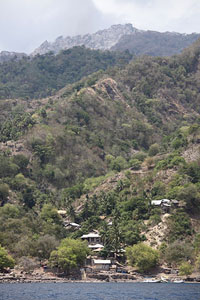 |
||
|
Overview of historically active area |
Village in shadow of volcano |
Village in shadow of volcano |
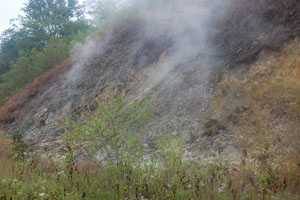 |
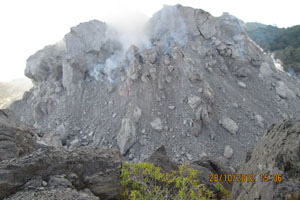 |
|
Precursory degassing prior to eruption, June 12, 2012 (Image kindly provided by Ignatius Cua) |
2012 Dome as observed on 28.10.2012 (Image kindly provided by Ignatius Cua) |
|
Inactive Rokatenda dome with Rerombola degassing behind |
Rerombola lava dome |
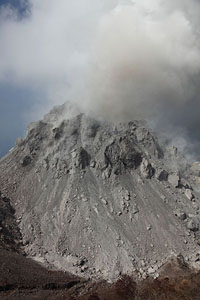 |
||
|
Rerombola degassing |
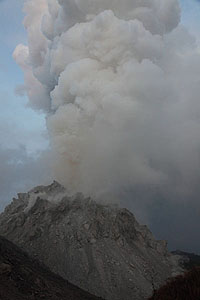 |
||
|
Rokatenda (left) and Rerombola (right) |
Rerombola degassing at dawn |
Rokatenda (left) and Rerombola (right) |
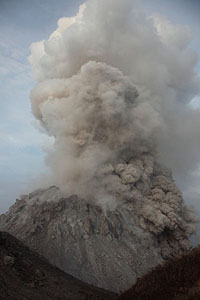 |
||
|
Small pyroclastic flows on flank of Rerombola |
|
Rockfalls / Miniature pyroclastic flows |
Rockfalls / Miniature pyroclastic flows |
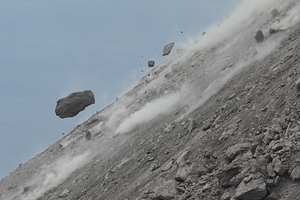 |
||
|
Intense rockfall activity |
Rock bouncing down dome |
Debris apron with vegetation ignited by glowing blocks |
|
Intense rockfall activity |
Larger pyroclastic flow viewed from boat |
|
Nighttime ash venting |
Nighttime ash venting |
|
Close-up of vent (on left) from nighttime activity shown above |
Weak degassing occuring constantly from other vent |
|
View of Rerombola dome at night with incandescent rockfall activity |
View of Rerombola dome at night with incandescent rockfall activity |
|
Glowing summit of Rerombola dome |
Rerombola at night with minor rockfall |
Rerombola at night with minor rockfall |
|
Rerombola at dawn with minor rockfalls |
Rockfalls on lava dome in moonlight |
|
Rockfalls on lava dome in moonlight |
Incandescence on flank following double lobe collapse |
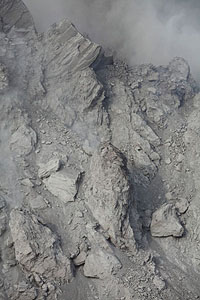 |
||
|
Extrusion lobes |
|
Extrusion lobes on north flank of Rerombola |
Extrusion lobes on north flank of Rerombola |
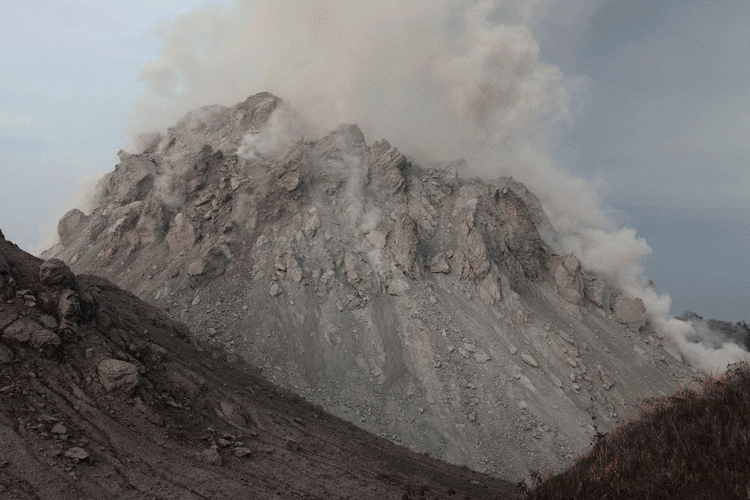 |
|
Animation of collapse of extrusion lobe |
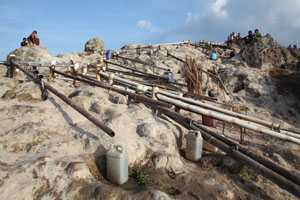 |
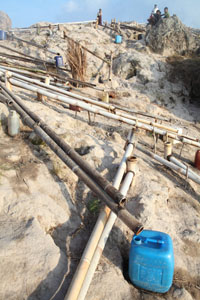 |
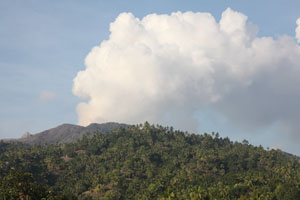 |
|
Collecting water from fumarolic steam emissions |
Collecting water from fumarolic steam emissions |
View to degassing dome from fumaroles |
|
Leaving Ropa by fishing boat |
Landing on Paluweh Island |